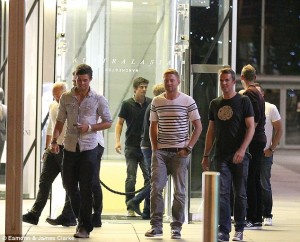
A gradual but inevitable descent into cricket-based loathing and bile.
No Such Thing As A Free Launch: Simon Hughes’s ‘Cricket’s Greatest Rivalries’
Cometh the Ashes, cometh the tie-in books.
Simon Hughes seems a decent sort of bloke to us: fairly self-deprecating, good at what he does (compare and contrast his role as The Analyst with ex-footballer Andy Townsend’s Tactics Truck) and unlikely to attract the ire that several of the more outspoken commentators do. One of his early books, A Lot Of Hard Yakka, was a worthy winner of the Sports Book of the Year and his other autobiographical works such as Morning Everyone have also been good reads. However from what we remember, the last book of his that we read (And God Created Cricket) was disappointing, with a lot of rehashing of familiar anecdotes from cricket’s rich history.
His new book professes to be a history of the Ashes in ten matches. Considering there have been 310 Tests – excluding last week’s – this sounds a challenging task and one that could be open to debate and discussion (presumably the purpose). And a book with 310 chapters might have been a bit problematic for both author and reader. Anyway, it starts, naturally enough, with the 1882 Oval Test and finishes at Adelaide in 2006 (*spit*). Usefully, each chapter also summarises what happened in the interim since the previous match, providing some sporting context to each of these chosen games. The real interest for this reader came with the second and third entries, which focused on Tests from 1902 and 1926, part of a long stretch between the days of WG Grace and the Bradman/Bodyline era that is often overlooked for a variety of reasons. Post-Bradman things become more familiar even if it is this long period that has matches controversially omitted. Tellingly, the detail that Hughes goes into with matches not part of the main feature suggest that cutting them down to ten was very difficult (Jim Laker’s 19 wicket haul is dealt with as an epilogue to England winning back the Ashes in 1953, which includes the insight that after the match at the Oval finished, Fred Trueman was summoned by telegram to return to his RAF station by midnight).
Indeed, the detail that Hughes goes into is admirable, especially for the matches long since confined to history beyond most people’s memory. Some familiar anecdotes make yet another return (Grace’s comment about “strong wind today”, David Lloyd playing Jeff Thomson with his cock) but the insight stemming from his research more than compensates for these. Overall, the book is worth investigating, although it could be too detailed for a casual follower of cricket and conversely might offer nothing new to people who’ve got a veritable library of cricket books already. But for the large group somewhere in the middle (that includes us), it is, rather like the author himself, fine and dandy.

Although how he found the time to research the book is beyond us. The good people of Bermondsey and Old Southwark need an explanation.



1 Comment
Post a Comment
1
Matt H
02 Dec 2013 22:07
In light of a recent tweet by Mr Hughes, maybe the first line of the second paragraph should be amended.